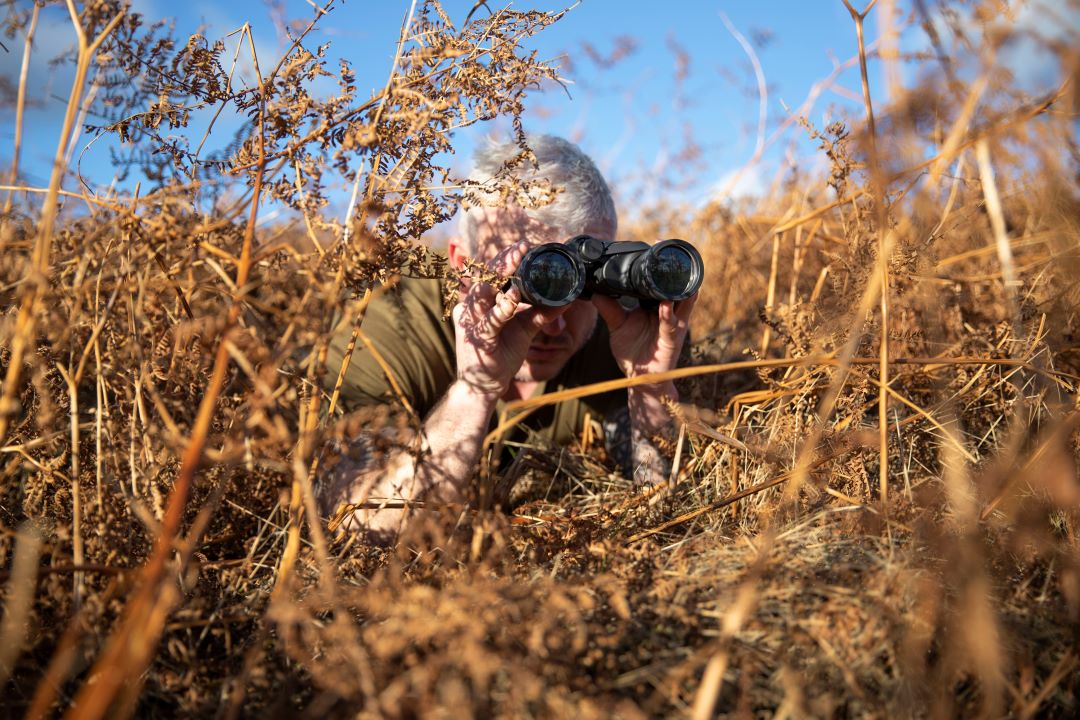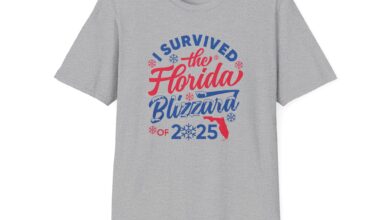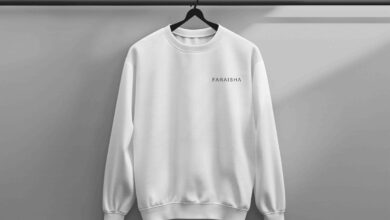Hunter Equipment List

- A warm Finnish-style hat with a visor and ears.
It’s a good thing, but it’s heavy and prone to getting wet. A fleece hat is many times Hunter Equipment lighter, it does not take moisture, and if it gets wet under the drizzle, it dries quickly. - Warm autumn jacket made of non-rustling fabric (preference is given to windstop fleece). In general, you need to remember that it can be quite windy in these places, so the jacket should be windproof. The recommended type of camouflage is autumn with a small indistinct yellow-gray-brown pattern, plain gray or gray-brown.
The correct name is “Windstopper” or “Windblock”. The fabric is a sandwich, where there is a membrane between the top layer and the inner one. A very comfortable jacket, the only nuance is that it can be hot with active movement. It all depends on the characteristics of the membrane. - Summer-autumn hunting pants without warm lining (it is more than replaced by warm underwear).
Dense synthetic material. It is reluctant to take moisture and dries quickly. - Downy or padding non-rustling vest.
Mega cool thing! There is no weight, the volume to be packed is minimal, but it is warm and comfortable. As an undergarment under a jacket, it is perfect. - A warm woolen sweater (optional).
Old school in its purest form. It is voluminous, it takes moisture well. Leave it for gatherings with friends on the terrace of the country house after the expedition. - Light fleece shirt, olive or gray – 2 pieces.
It’s a convenient thing. The main thing is that it should not be short. Otherwise, it will get out from under the belt, and this is not always convenient. - Moisture-wicking hunting thermal underwear (from a good manufacturer) – 2 sets.
Hunting thermal underwear is synthetic and woolen. Synthetic is often of the compression type, tight-fitting. It’s good for action, but not everyone likes the compression effect. Woolen thermal underwear from a good manufacturer works just as well to wick away moisture, but at the same time does not cool down. This is the effect of wool. And it dries on the body quite quickly too. The times of thick diving sweatshirts and underpants have passed, and now the woolen cloth is thin, but strong. In the fall, I would take wool. - Warm socks (from a good manufacturer) – 4 pairs.
Lorpen is our everything, but Alloy has good socks too. - Warm gloves (fleece) without finger slits.
BASK Polar Gloves – I’ve never seen a better one either in terms of material or cut. - Lightweight gloves (fleece) without finger slits.
Decathlon has good softshell gloves, and there are also thin fleece gloves. A thin glove should fit snugly around the hand. It’s more convenient this way. - Waterproof mountain boots.
In the article, MK pointed to AKU boots, and I agree with him, although I myself now walk in boots from another company. The AKU Jagger and AKU Grizzly are beautiful high-top boots. And why do we need a high ankle, you say? And for shallow fords across streams, I’ll tell you. My current boots have low boots and you have to jump or run across the stream by raising your feet. The only warning is that when walking through wet bushes or in the rain, never tuck membrane pants into your ankle boots! Only on top! Otherwise, water rolling down the top layer of your membrane pants will quickly turn your boots into two pools. - Slippers for walking around the camp.
The cheapest ala Croks from Leroy Merlin or Decathlon. The main thing is that there is a heel strap, otherwise you can slip out of the slippers on the wet tundra. By the way, I also walk in shallow fords in such slippers so as not to get my boots wet once again. - Ultralight raincoat (I personally prefer a large NATO poncho).
- A backpack for a day out, preferably the one you’re used to.
- Sleeping bag with a comfort temperature of -5…-15 °C.
And it should be downy. Yes, yes. Rumors that fluff gets wet and sleep uncomfortably afterwards are greatly exaggerated. Pack your sleeping bag in a waterproof bag made of siliconized ripstop and you’ll be fine. But there is little space and weight, and a lot of heat. A sleeping bag with a synthetic filler of this temperature regime is much heavier and more voluminous. - Fleece liner in the sleeping bag (preferably two to change).
There is a nuance. If you sleep in woolen thermal underwear, the fleece liner will begin to collect static electricity from the interaction with the wool and stick to you. I would recommend a flannel liner. The effect is the same, but there is less static. If it is not on sale, and most likely it is, then you can just buy the material and order tailoring. Not just for once, it will come in handy. - Multifunctional penknife or multi-tool.
The multitool has one difference – it has pliers. If you need them, then take a cartoon. And if not, Victorinox will solve all the problems. Scissors and a corkscrew are mandatory. - Ramrod and cleaning accessories.
- Handkerchiefs.
I take a few packs of paper handkerchiefs and use them both for their intended purpose and as toilet paper. They do not take up space, the waterproofing of the pack is good. He stuffed it into his pockets and fully armed. But it is better to wipe sweat with a towel than with a cloth handkerchief. And what kind of towel do you know best? Microfiber floor cleaning cloth. It costs a penny, it doesn’t get burned, it washes in the river, it wipes sweat dry. - A set of your own medications (a general first-aid kit will be formed separately).
I don’t trust anyone and drag my pharmacy around. That is the way. I have never regretted it. - Personal hygiene products.
During the business trip, he looted the bathroom of his hotel room and closed the issue with shampoos and soap. Ideal packaging for expeditions. - A camera or camcorder with a spare battery(s) and a charger.
It’s for an amateur. Usually, everything is filmed with a smartphone. Or they hire an operator. - Binoculars with a magnification of 7 to 12. If you have several binoculars, I recommend giving preference to the one that has a high aperture: moose and bear are crepuscular animals.
- Laser rangefinders for eight hundred meters and ballistic tables for your ammunition.
- At least one night sight per group (but not more than two).
- Flashlights.
Battery-powered! Leave the lights on the batteries for urban survivalists. These always have a power outlet, unlike you. - Fiskars or Viking construction knives of Scandinavian production, in a sheath, the most inexpensive (for gifts to the natives, if you meet them) – four pieces per group.
At the end of the expedition, I also give topographic maps of the area where I hunt and where we met. It’s also going with a bang. - GPS navigator.
GARMIN 66. Everything is the same, but it consumes less batteries. - Silicone water-repellent boot lubricant
I proceed from their simple principle: The living to the living, the inanimate to the inanimate. That is, for boots with a synthetic fabric upper, silicone grease will go. It is better to treat leather boots with natural lubricants based, for example, on seal fat. - Trophy packing bag.
- If you are going to go fishing at the same time, tackle for grayling and arctic char. Spinning rods are the simplest and strongest, preferably as telescopic as possible.
This is where AliExpress comes in. I’ve been carrying a spinning rod I bought on Aliexpress for a couple of years now. It’s worth a penny, it’s not a pity to lose, it catches fish. And there’s a handful of them, bought there, in a menthol lollipop box. - Polyurethane foam mat fastened at the back for sitting on rocks and bumps.
Oh yes! Otherwise, there will be problems and deprivation.
This is what I did with Alaverdi based on my practical experience.



